Tom's Guide Verdict
The Jaguar I-Pace isn’t an industry-leading EV by any means, but it still has a lot to offer. Whether you’re after hi-tech features, luxury and comfort, or something with enough space to shift things around, the I-Pace will have you covered. Shame about the price.
Pros
- +
Accurate range estimates
- +
Ultra-customizable seating for maximum comfort
- +
Lots of tech options available
- +
Attractive, aerodynamic design
Cons
- -
Relatively slow charging
- -
Expensive
- -
Driver assistance systems could use some work
Why you can trust Tom's Guide
The Jaguar I-Pace has a lot of the things you’d expert from a luxury car maker like Jaguar. On the outside it’s a sleek SUV, and inside is a spacious cabin with seats that can be customized for optimal comfort. And, like any good electric car, there’s plenty of tech to enjoy, including some frivolous-sounding gadgets you might normally dismiss — like a projected heads-up display.
The problem is the electric car industry has grown a lot in the past four years, and the electric SUV segment is getting increasingly competitive. When you have a single EV that offers 232 miles of range, and charging speeds that are fairly slow by recent standards, it makes you wonder whether the I-Pace’s $71,300 starting price is worth it. Especially when there’s no killer feature, like Tesla has with Autopilot or Ford’s home backup power system.
I spent little over two weeks driving the I-Pace around, including driving up the length of England. In short, the Jaguar I-Pace has its flaws, but there is a lot to like about the car. There may not be anything particularly unique about the I-Pace, but it still offers solid performance and a range of luxury and hi-tech features.
Read on to find out more in our full Jaguar I-Pace review.
Jaguar I-Pace review: Availability, pricing and trim levels
The Jaguar I-Pace is available now with prices starting at $71,300. Only a single trim is available in the United States, offering all-wheel drive, 394 horsepower and 512 lb-ft of torque.
In the U.K. drivers can choose from up to five different I-Pace models. The I-Pace S starts at £65,620, and is followed by the I-Pace SE at £70,200 and the I-Pace HSE at £74,670. On top of that is the I-Pace Black starting at £72,820 and the I-Pace HSE Black at £76,920.
All five cars come with the same AWD drivetrain, and the only key difference is the number of features that are available. The I-Pace Black is a blacker version of the same car, as the name suggests, but with 20-inch wheels as standard and a slightly reduced range as a result.
Get instant access to breaking news, the hottest reviews, great deals and helpful tips.
But no matter what way you look at it, the I-Pace is an expensive car. Though that should be no surprise, considering that it is both an EV and a Jaguar.
Jaguar I-Pace review: Range, battery and charging
The new 2023 Jaguar I-Pace comes powered by a 90 kWh battery, and offers 234 miles of EPA-rated range. That translates to around 292 miles per the WLTP charging cycle. The car I drove (a 2021 model) offered an estimated 255 miles of range with 100% battery in eco mode.
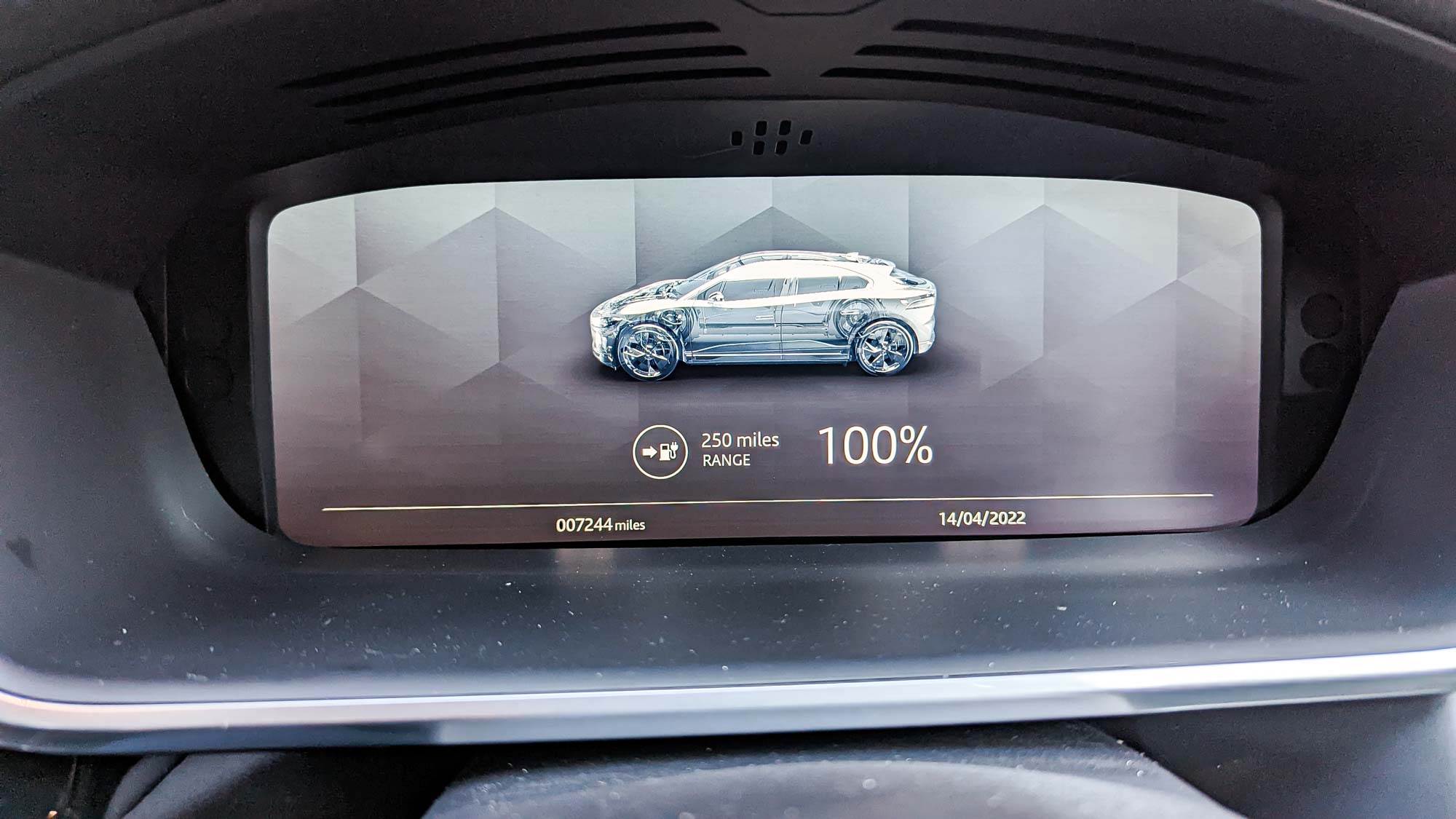
The latest models recharge at 7kW from an AC charger, like a home EV charger, and gain around 22 miles per hour. Some models, like the one I drove, can charge at up to 11kW with a compatible charging point, allowing it to recoup 33 miles per hour. At those speeds you’re looking at a respective 12.75 and 8.6 hours to recharge to 100%.
Up to 100kW DC rapid charging is supported, and can recoup around 78 miles of range in 15 minutes. Topping up from 5 to 80% at this speed takes around 45 minutes.

Those speeds are somewhat slower than you’d expect from a premium-priced EV. The Tesla Model Y, for example, can handle up to 250 kW speeds and regains 162 miles of range in about 15 minutes. That’s more than double the I-Pace’s recharging capabilities, and on a car that starts at $65,990. The Kia EV6 can handle up to 350 kW recharging speeds, and can take you from 10-80% charge in 18 minutes. Less than half the time it takes the I-Pace to do a similar amount of charging and in an EV with a relatively low starting price of $40,900.
So while the I-Pace’s 100 kW recharging capabilities are far from what you’d call slow, it does put the car at a significant disadvantage when compared to other SUVs on the market.
Jaguar I-Pace review: Design and Interior
Unsurprisingly, the I-Pace shares a lot of its DNA with Jaguar’s E-Pace and F-Pace. But unlike its gasoline-chugging siblings, there is plenty to differentiate the I-Pace on the outside. It’s sleeker and more compact for one, and has a bunch of little flourishes that show Jaguar did have aerodynamics in mind when the car was being designed.
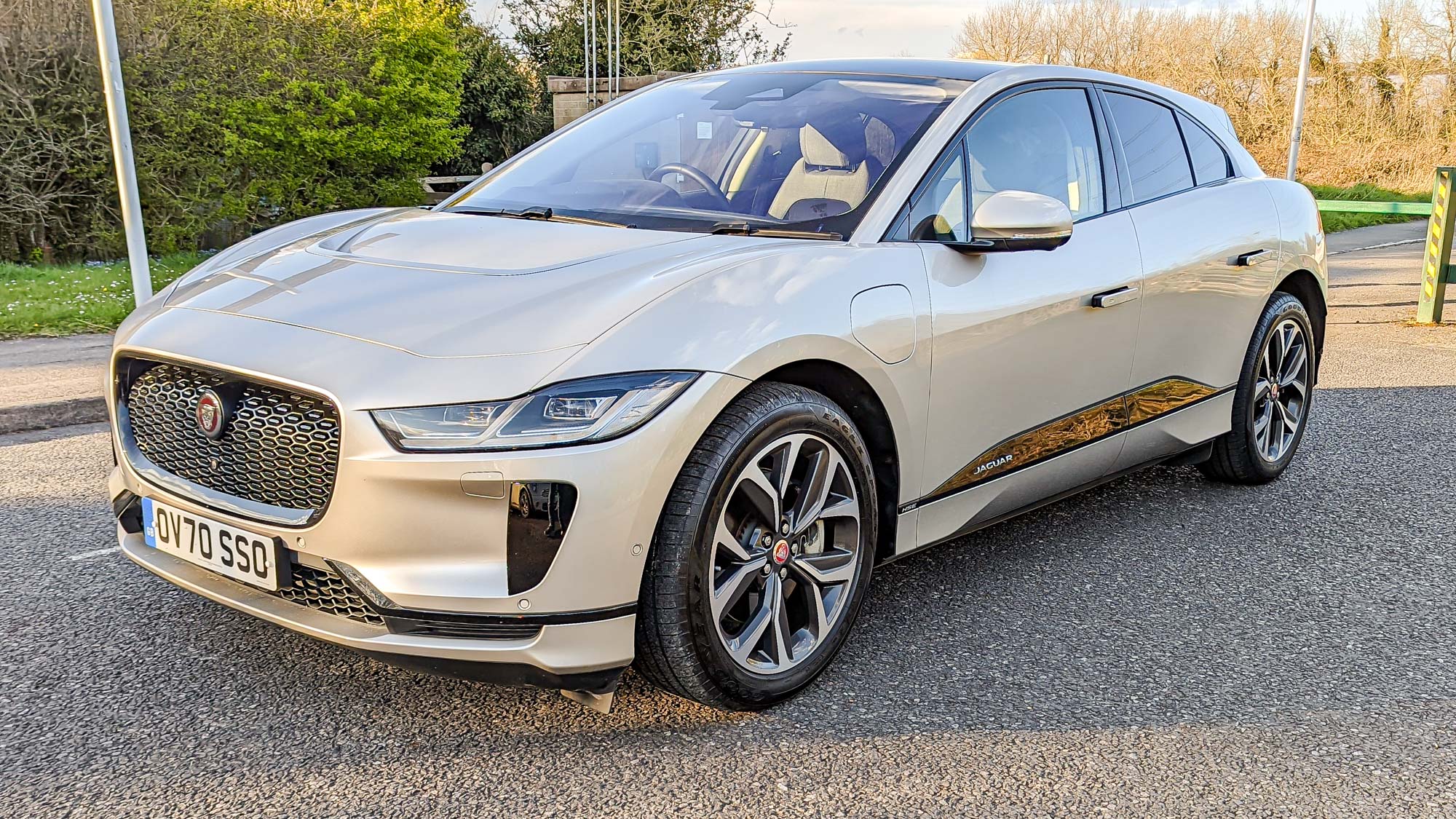
That means flush door handles, channels for diverting air and the lack of a rear windshield wiper. That’s right: the growing trend of cars without a rear wiper does seem to be because they increase drag. So you might want to keep a spray bottle of wiper fluid and a squeegee, because it can get pretty dirty back there.
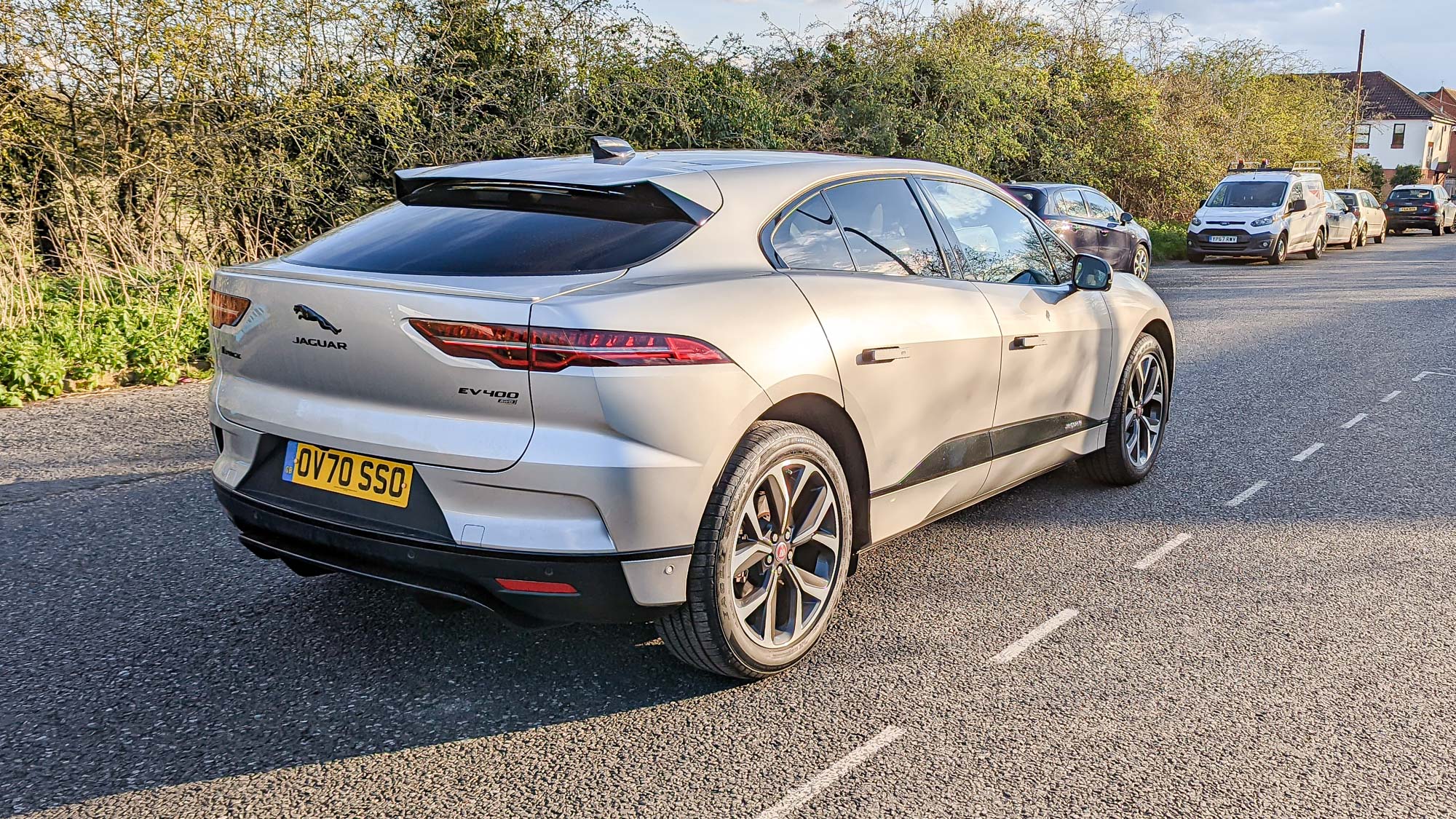
In the U.K. the variety of features you can get in the I-Pace depends on which trim you get. Since the U.S. only has the one, that makes things a lot simpler — and you’ll wind up with more features thrown in as standard. Case in point: the fixed panoramic glass roof, which lets in a lot more light and makes the I-Pace feel more spacious as a result.
Inside, the central infotainment screen is fairly self explanatory, though it will require some deep diving to get to grips with where all the various settings are hiding away.
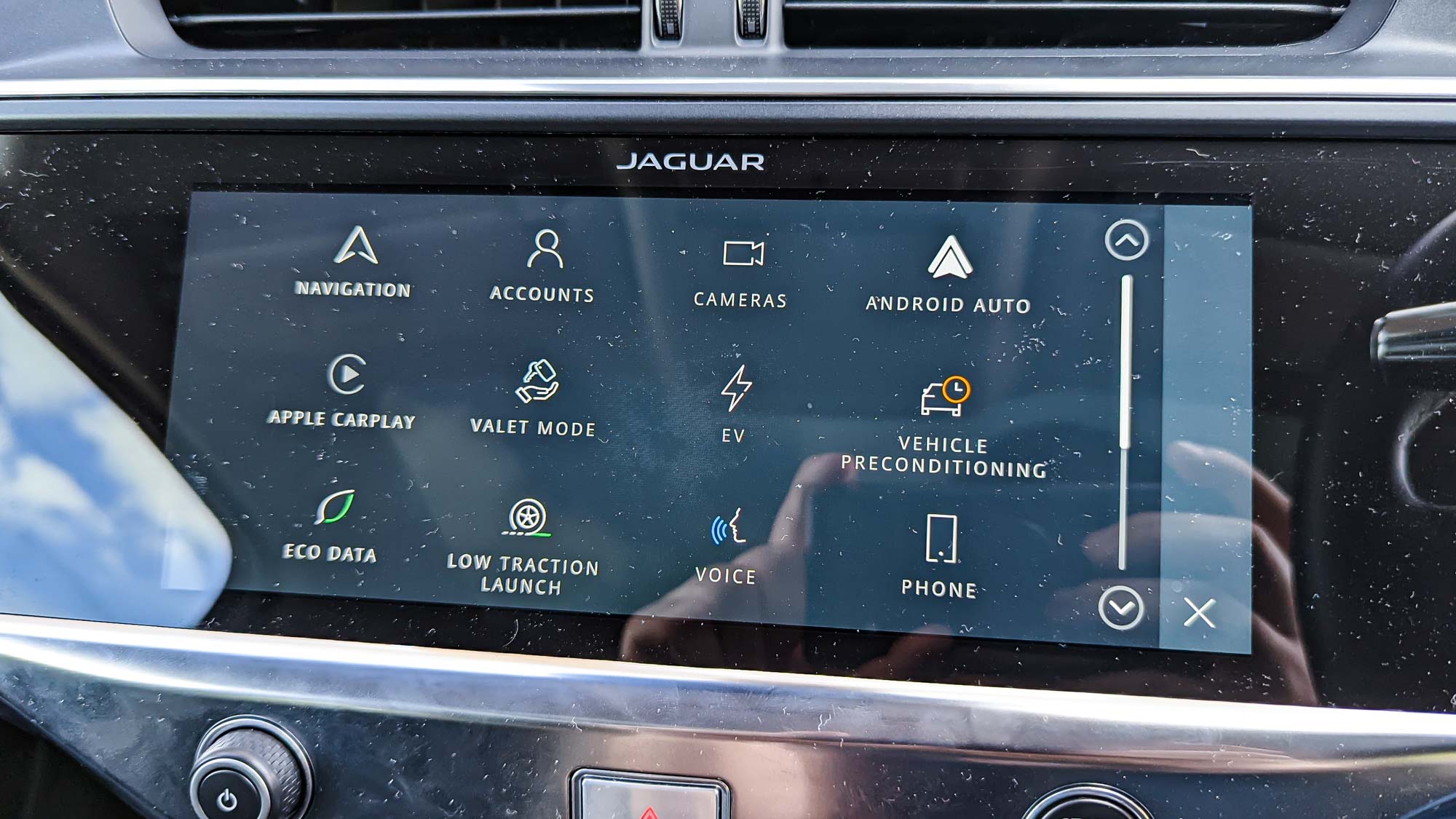
The smaller touchscreen in the center console is exclusively used for climate control — be it air conditioning, the fan or seats. However this does still require the use of physical dials, which have their own menu-like system. Spinning, pulling or pushing on the dial does different things depending on where you are, and getting used to that may take a bit of time.
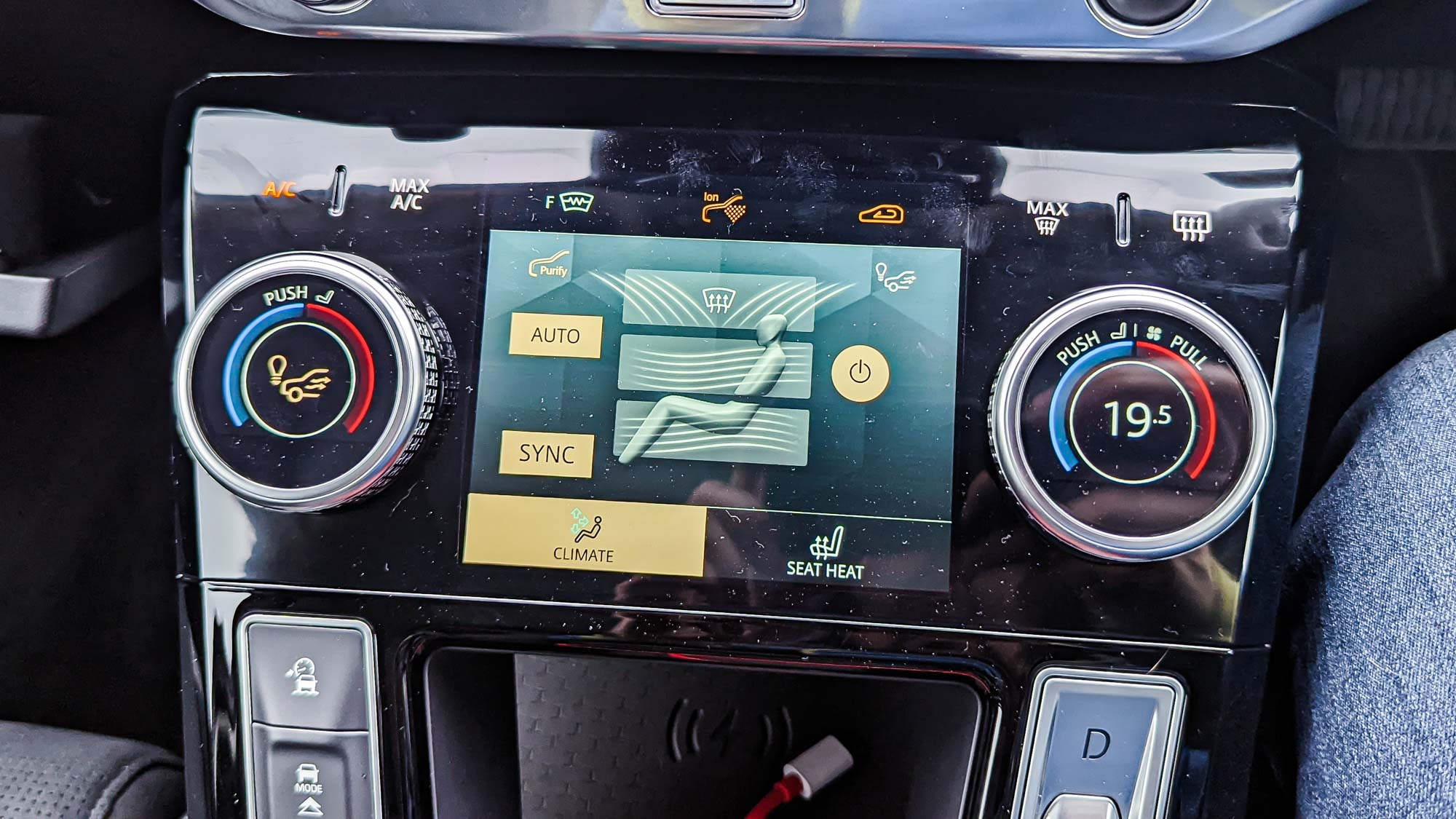
At least the buttons below the climate screen are pretty simple and self-explanatory. You push them to switch gears, change driving mode, or change the height of the car itself. The wireless charging pad tucked behind all this will be useful for keeping your phone out of sight while you drive. That does make it tricky to get in and out, but with wireless versions of Android Auto and Apple CarPlay, you’re not likely to need it.

The I-Pace’s seats are all leather. Jaguar doesn’t seem to have followed the example set by other automakers who have started offering leather-like vegan seating. If you like cows, this may not be the car for you.

From a cargo standpoint, the I-Pace has room to fit quite a bit of stuff in the back. There's 20.3 cubic feet in the trunk alone, which expands to 51.3 cubic feet when you fold the seats down. That’s not quite as much as the likes of the Tesla Model Y, which has 30.1 cubic feet of trunk space in the five seat model, and 65.9 cubic feet with the seats folded. But you are getting enough space to fit a good-sized Ikea order without having to Tetris everything into place.

The trunk also has a sub-compartment, hidden in the floor, for storing charging cables or other small essentials. The frunk, however, is a little disappointing: at 0.95 cubic feet, you’re not going to be storing very much in there. But at least there is a frunk, which is more than the upcoming Nissan Ariya can say.
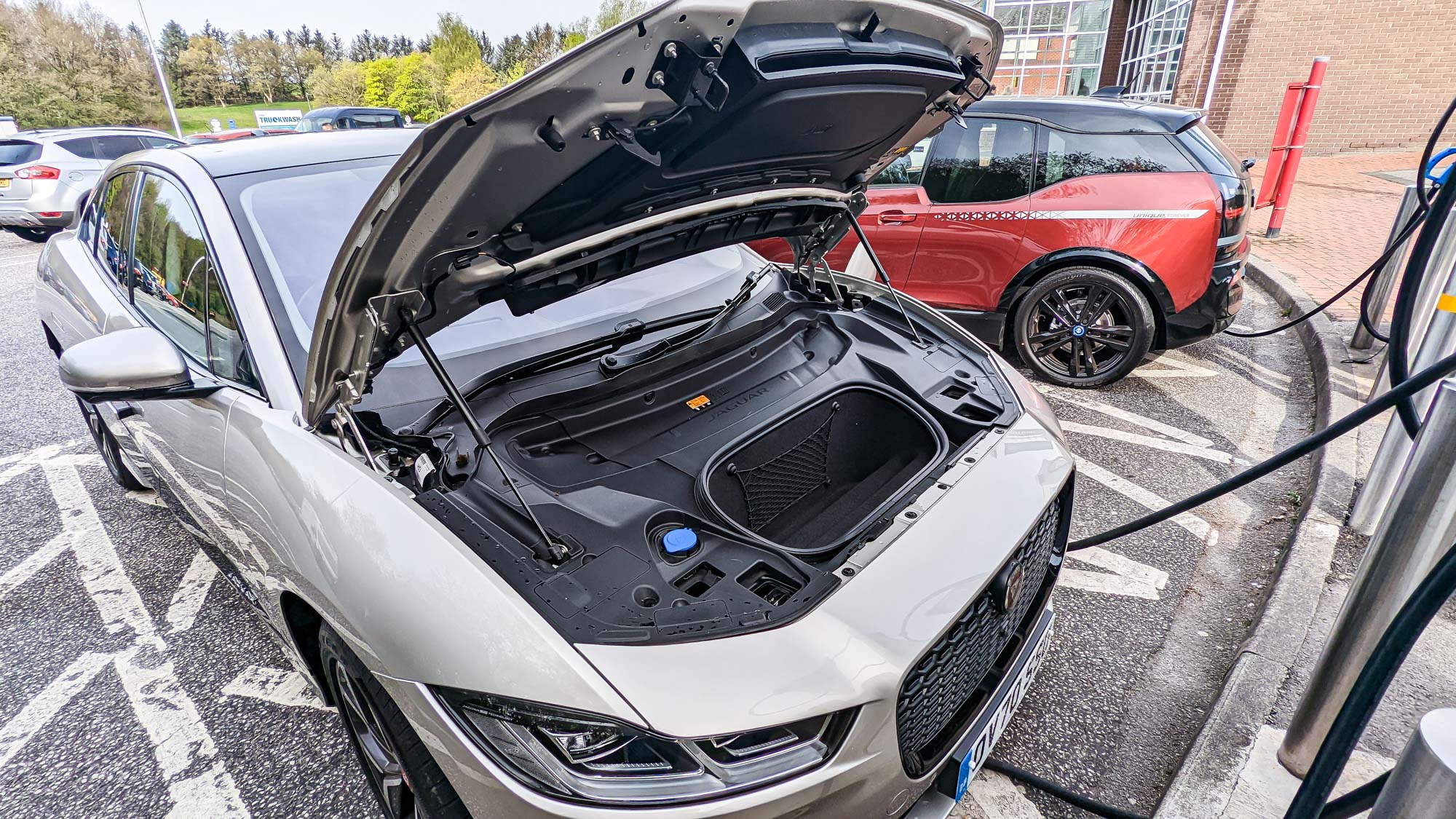
The back seats are also fairly spacious, something EVs are particularly good at, offering a comfortable space for my 6’4 frame and enough seat space for an 80-pound labrador to sprawl out during a long drive.
Jaguar I-Pace review: Tech and driver assistance
The Jaguar I-Pace I drove didn’t come with steering assist, which enables the car to autonomously stay within a clear lane. This is a standard feature in the U.S., included with the $71,300 base model. Sadly drivers in the U.K. are forced to pay an extra £7,200 ($8,879) if they want anything more advanced than adaptive cruise control.
However Jaguar doesn’t offer anything particularly groundbreaking with its driver assistance packages. Far from being able to drive itself, the I-Pace can adjust its speed depending on the traffic around it, while steering assist can monitor lane markings and keep you centered. Pretty basic stuff.
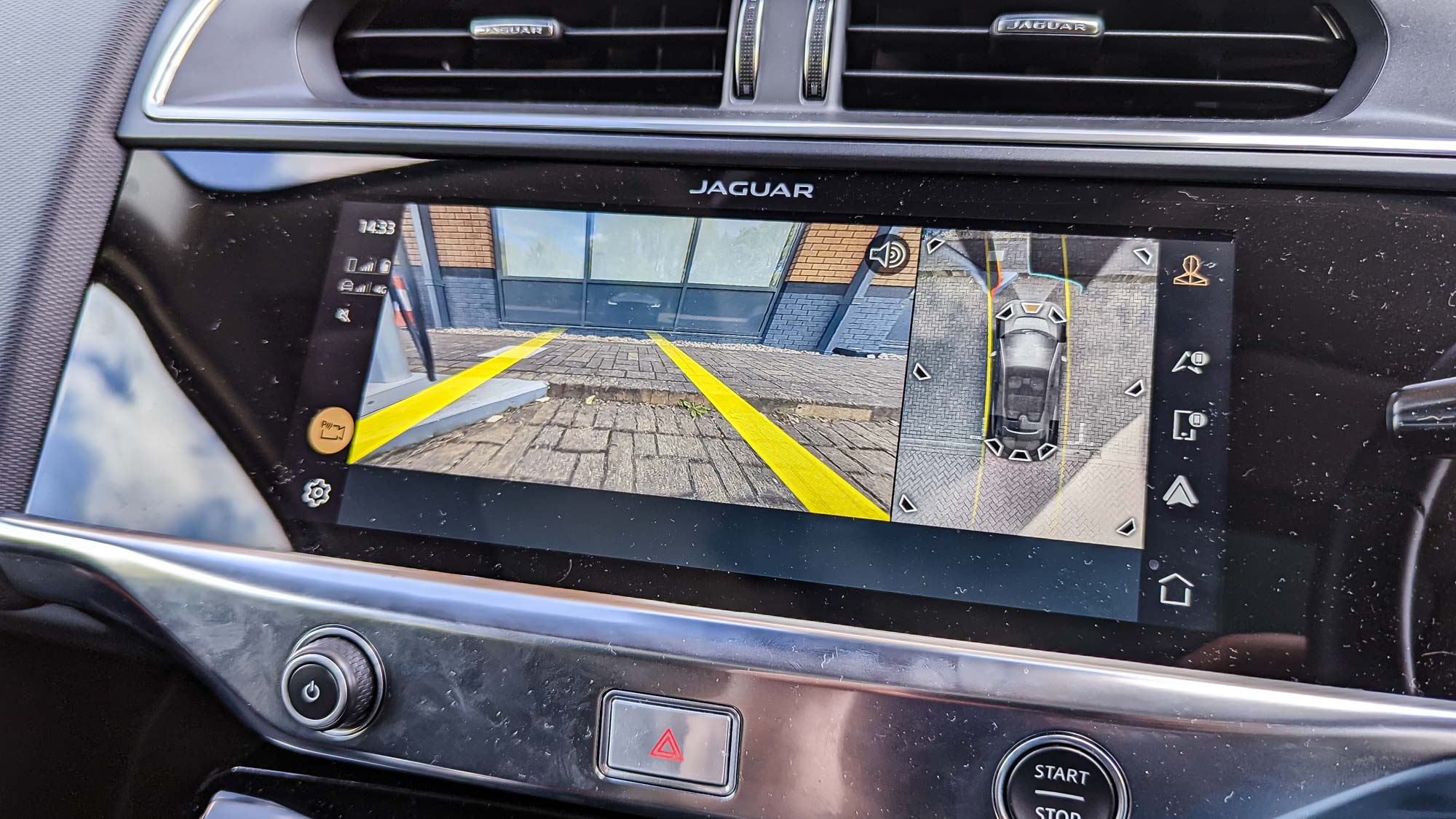
While this model didn’t have steering assist, it did have lane keep assistance. When this mode is switched on, the I-Pace has very limited auto-steering, and can stop you from drifting over the line into surrounding traffic — provided your turn signal isn’t on. Unfortunately you actually have to start crossing the line for this to kick in, but this should turn what would have been a full on crash into a side-sweep — which is bad, but not quite so serious.
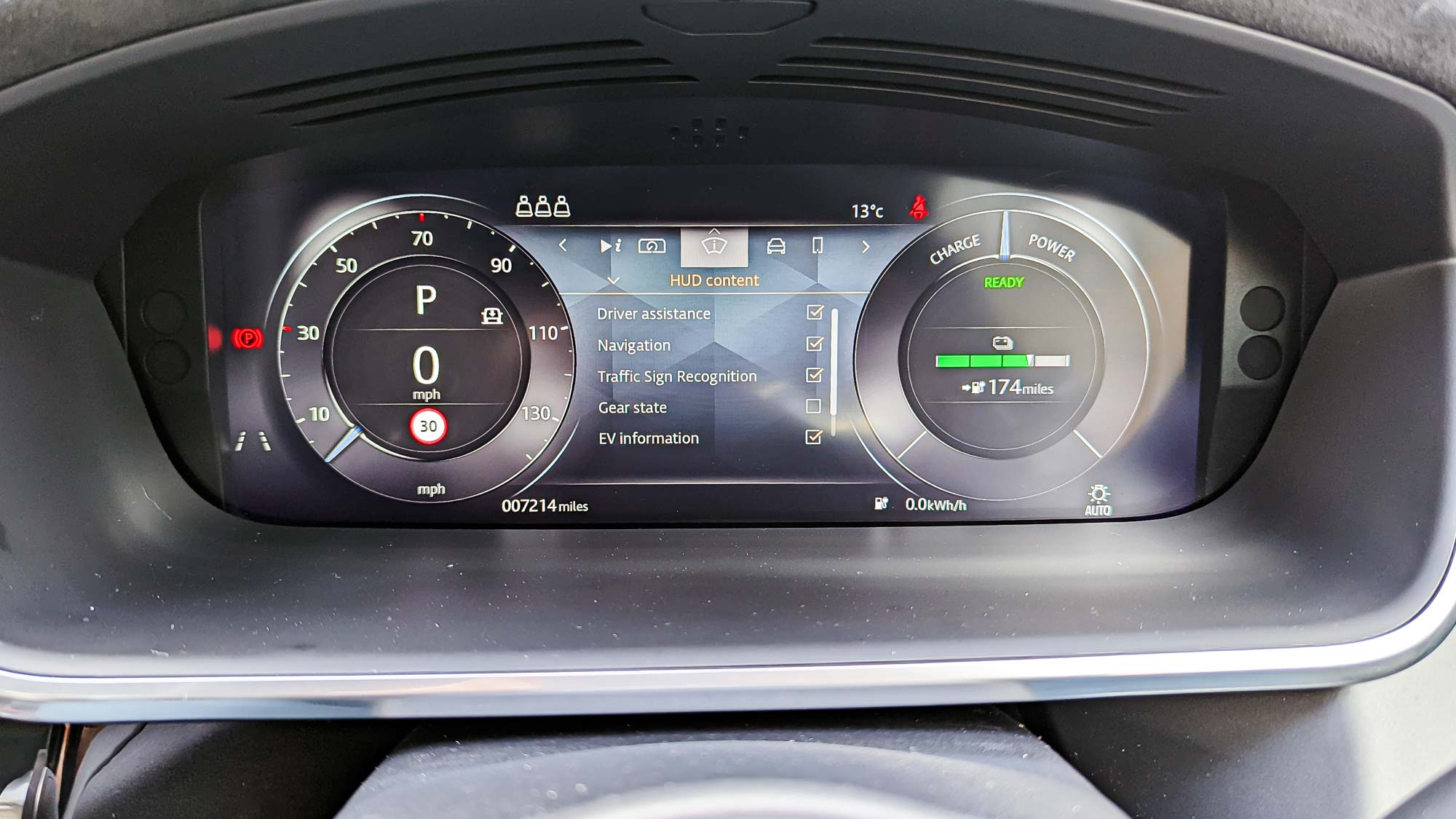
Surprisingly one of the features I liked using the most was the speed limiter. I tend to struggle keeping to the speed limit in an EV, either going too fast or too slow, and the Speed Limiter made it an absolute breeze. As the name suggests, it stops you going over a certain speed — ensuring you don’t get a ticket.
The problem was speed recognition kept switching on by default, and the I-Pace had a horrible habit of picking up speed limit signs it wasn’t supposed to see. It saw speed reductions at certain times of day (outside schools) and side streets that would be in a driver’s periphery, causing it to slam on the brakes to slow down.
Something similar happened when a cyclist pulled out of a side street, far enough away that a human driver wouldn’t have flinched, but close enough that the car freaked out and threw on the emergency brake. It’s stuff like this that proves cars can’t be described as “self-driving,” no matter how much autonomy they claim to offer.
Other notable tech inside includes the projected heads-up display (a $1,000 extra), which proved far more useful than I first thought — letting me watch my speed without having to glance down behind my steering wheel. The HUD also supports navigation, but to limited success. The infographics are quite small and harder to make out than using the display in the center console.
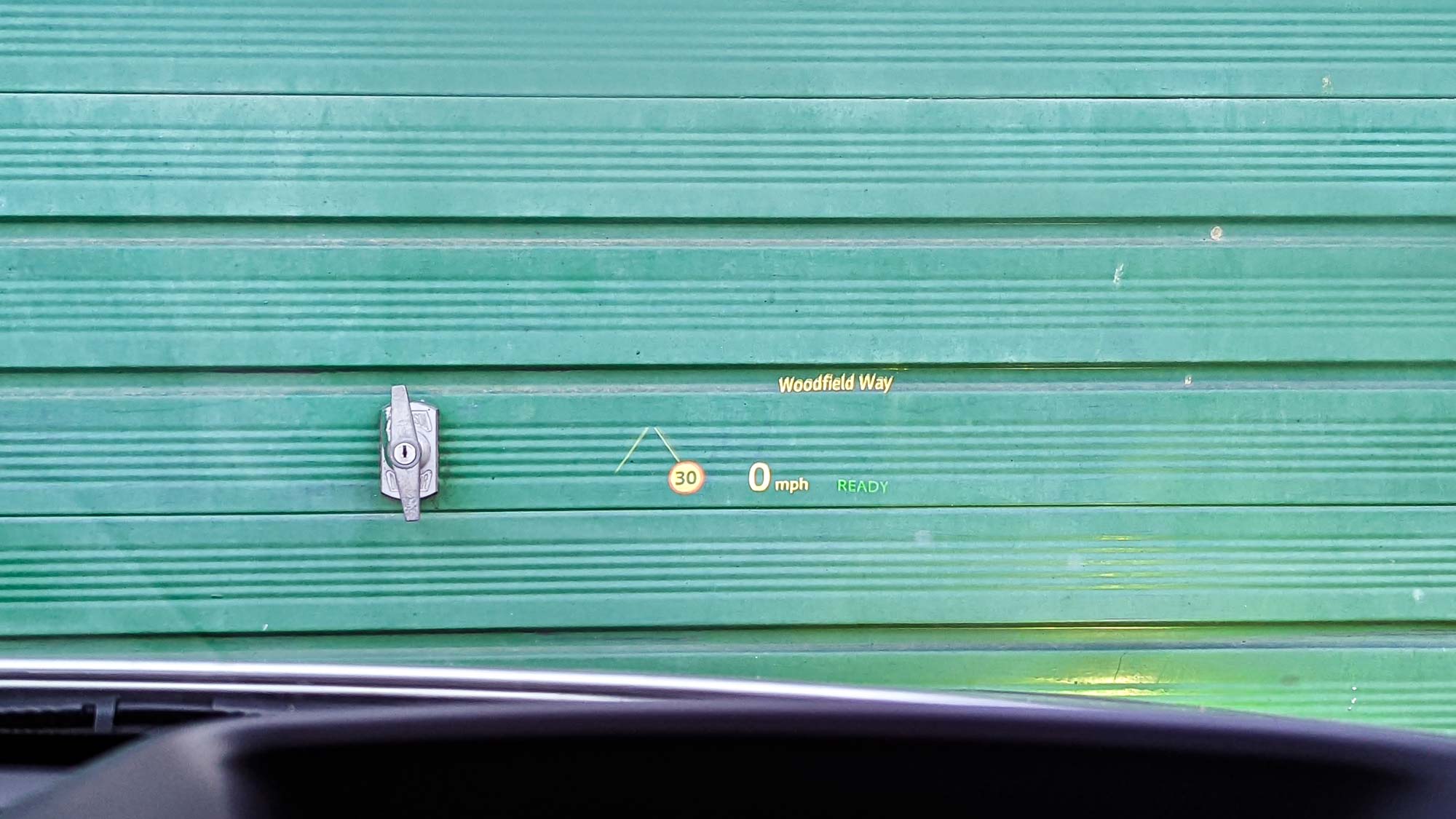
The HUD only supports Jaguar’s in-house navigation system too, rather than the likes of Google Maps or Apple Maps. I suspect a lot of people will end up doing what I did, and ignoring that particular option.
Jaguar I-Pace review: The drive
Despite its size, the Jaguar I-Pace is a very speedy car, even when you haven’t shifted into the performance-centric ‘Dynamic’ mode. Even in Eco mode the car is pretty nippy, and has enough sudden acceleration to knock both your and your passengers’ heads back into the seat.

Still Dynamic is where all the fun really lies, and Jaguar promises a 0-60 time of just 4.5 seconds. The Teslas of the world may be faster, but that’s still pretty quick for a full- #blown SUV.
The I-Pace proved itself to be an incredibly comfortable ride as well. So smooth and comfortable, in fact, that the only thing stopping me from cruising down a deserted highway at 100 mph was my own anxiety. The rest of the time, however, I often found myself edging over 80 mph without even realizing it. That’s where adaptive cruise control and the speed limiter really proved their worth.
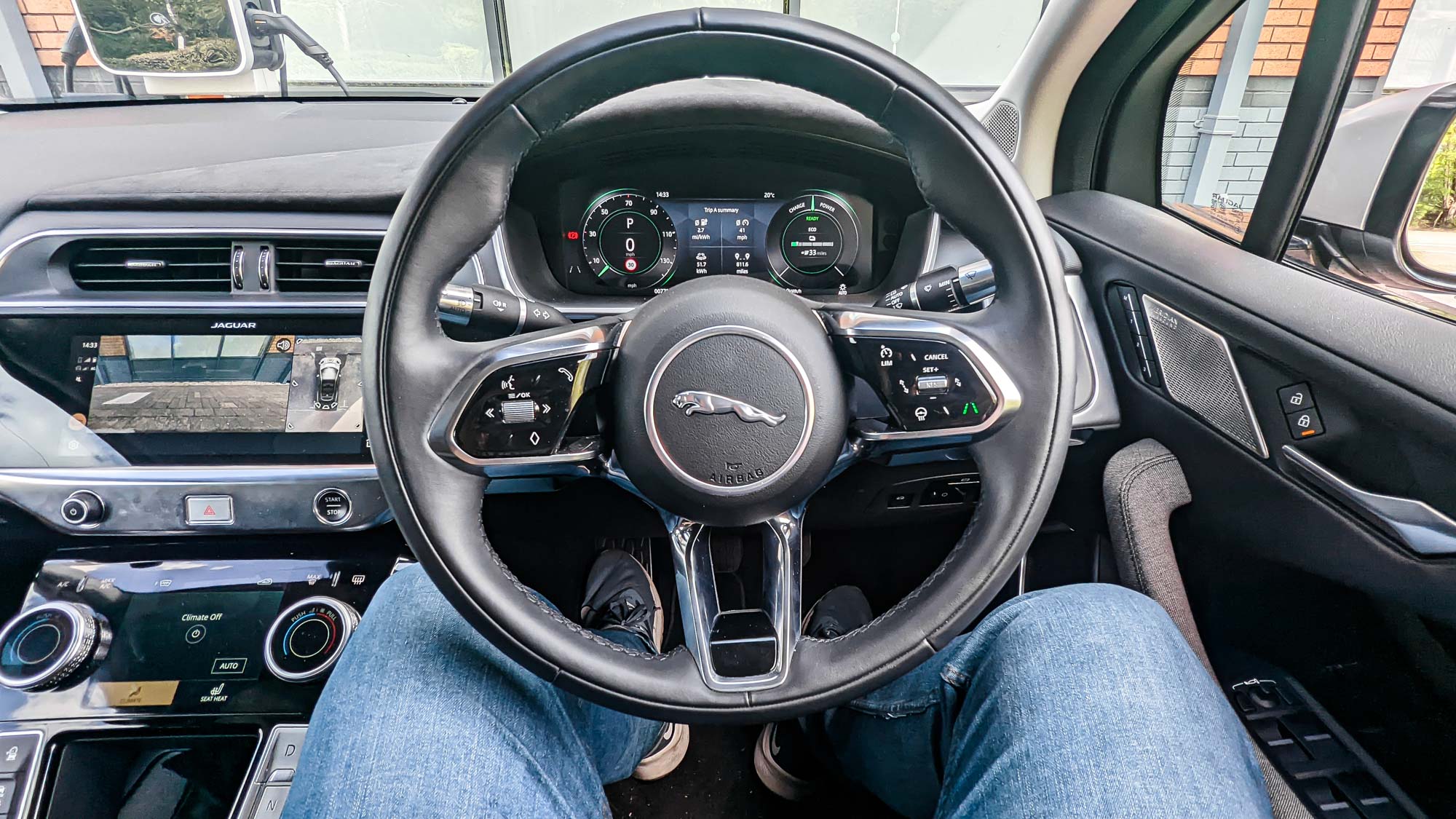
That comfort also extended to the seat itself, which can be customized in just about every way you can imagine. Even better is the fact it can be done on the fly by touch alone, and meant my aching back could get a little respite during lengthy stretches of driving.
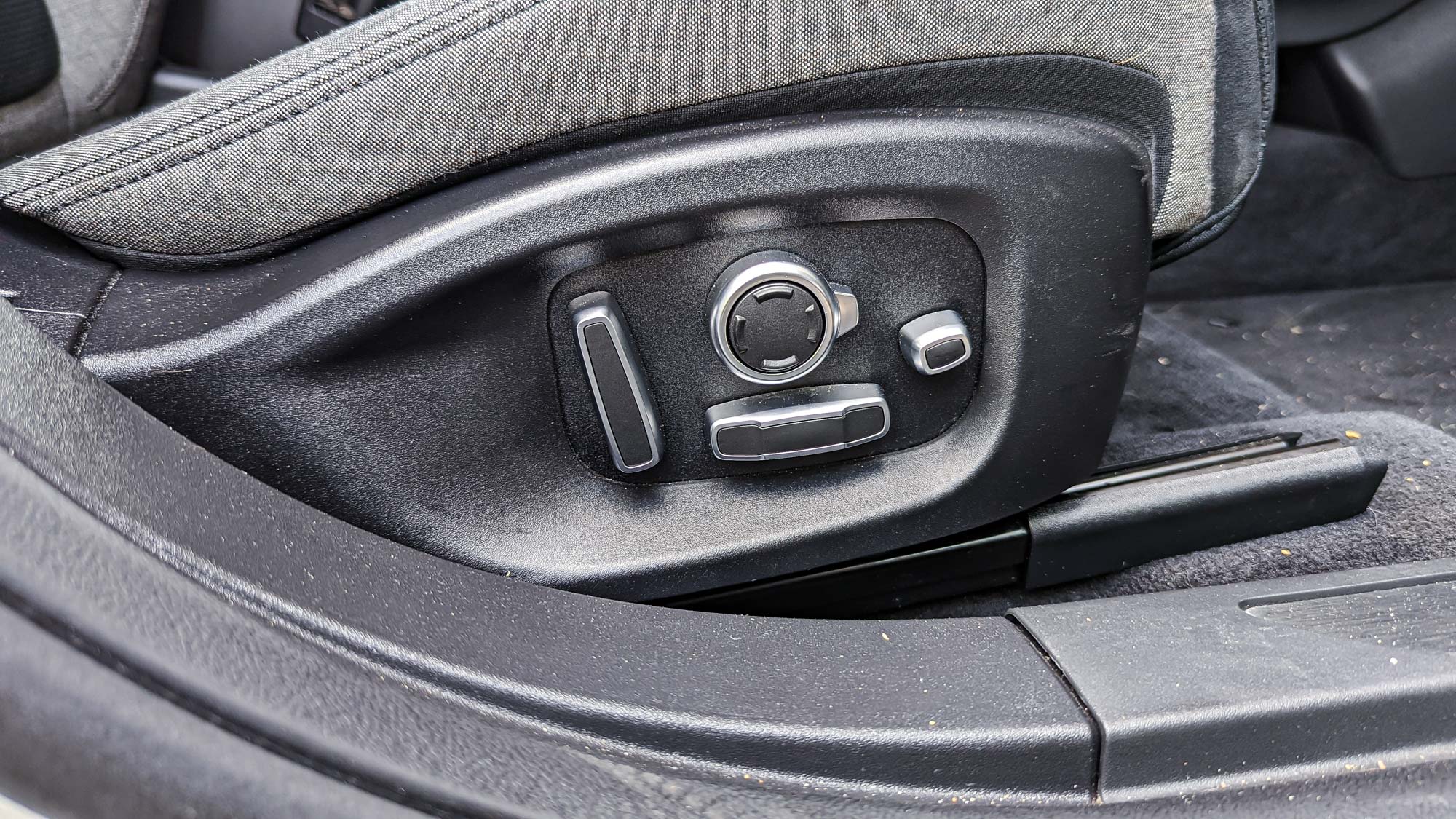
The lengthy trips are where the I-Pace really excels, as evidenced by the 425-mile round trip I took during the time with my car. There’s a great mix of luxury and performance here, with an interior that proved to be as comfortable as it is spacious. The customizable climate zones, in particular, were a big help, as was the option to cool down the seats.
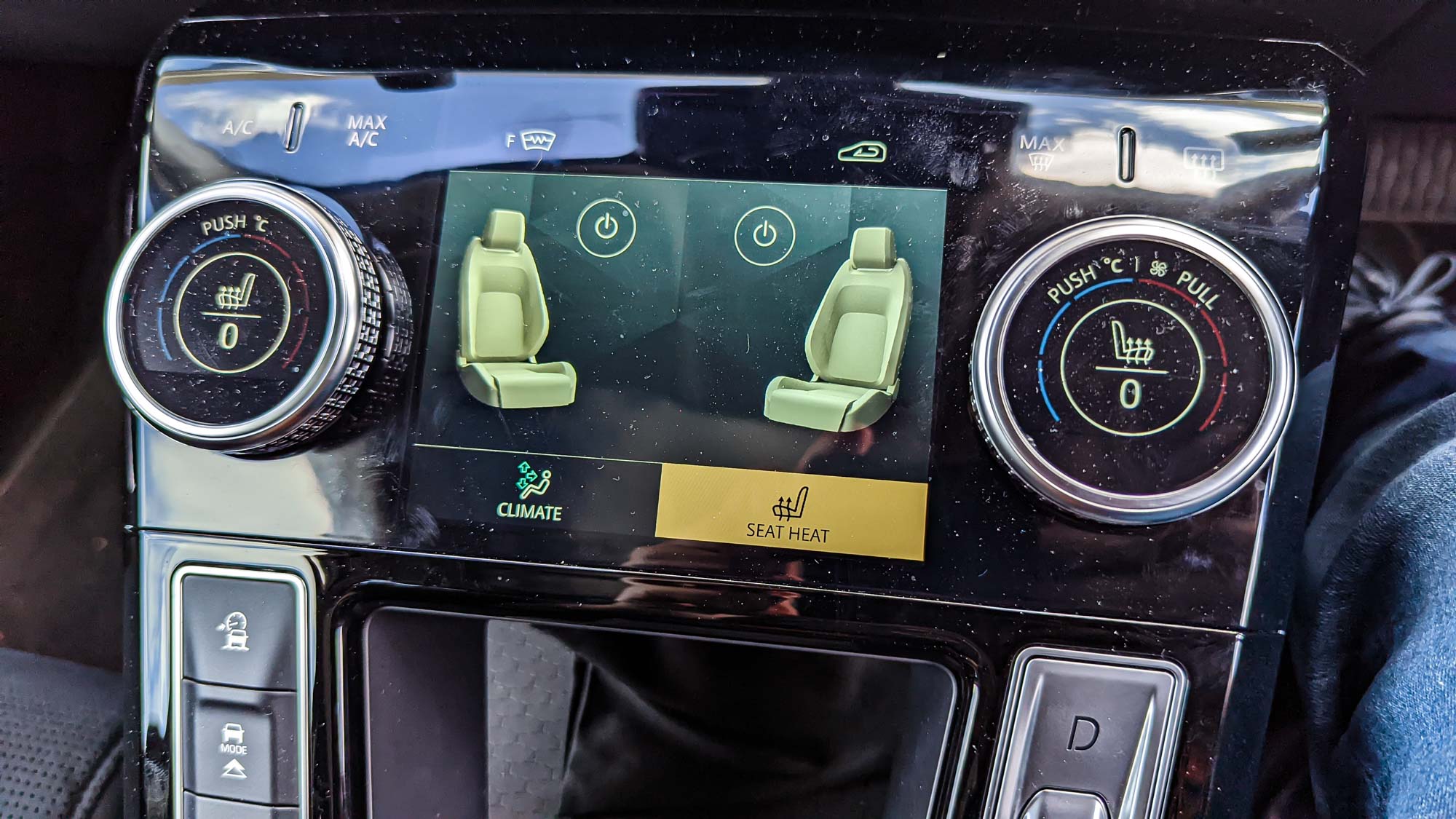
Heated seats are great and everything, but the ability to actively cool your seat down will trump it every time. This is a standard feature in the U.S., but I highly recommend it to any U.K. drivers who may be unsure of what trim to choose.
The battery held up pretty well too, despite the majority of the journey happening at 70mph with the climate control features on. I left with a fully-charged battery and 255-mile range estimate, and while I did stop to recharge along the way it never felt necessary. While I did stop to get a recharge three hours into my drive — I needed a break to get a snack — I I would have arrived at my destination with around 30 miles of range left had I driven straight through.
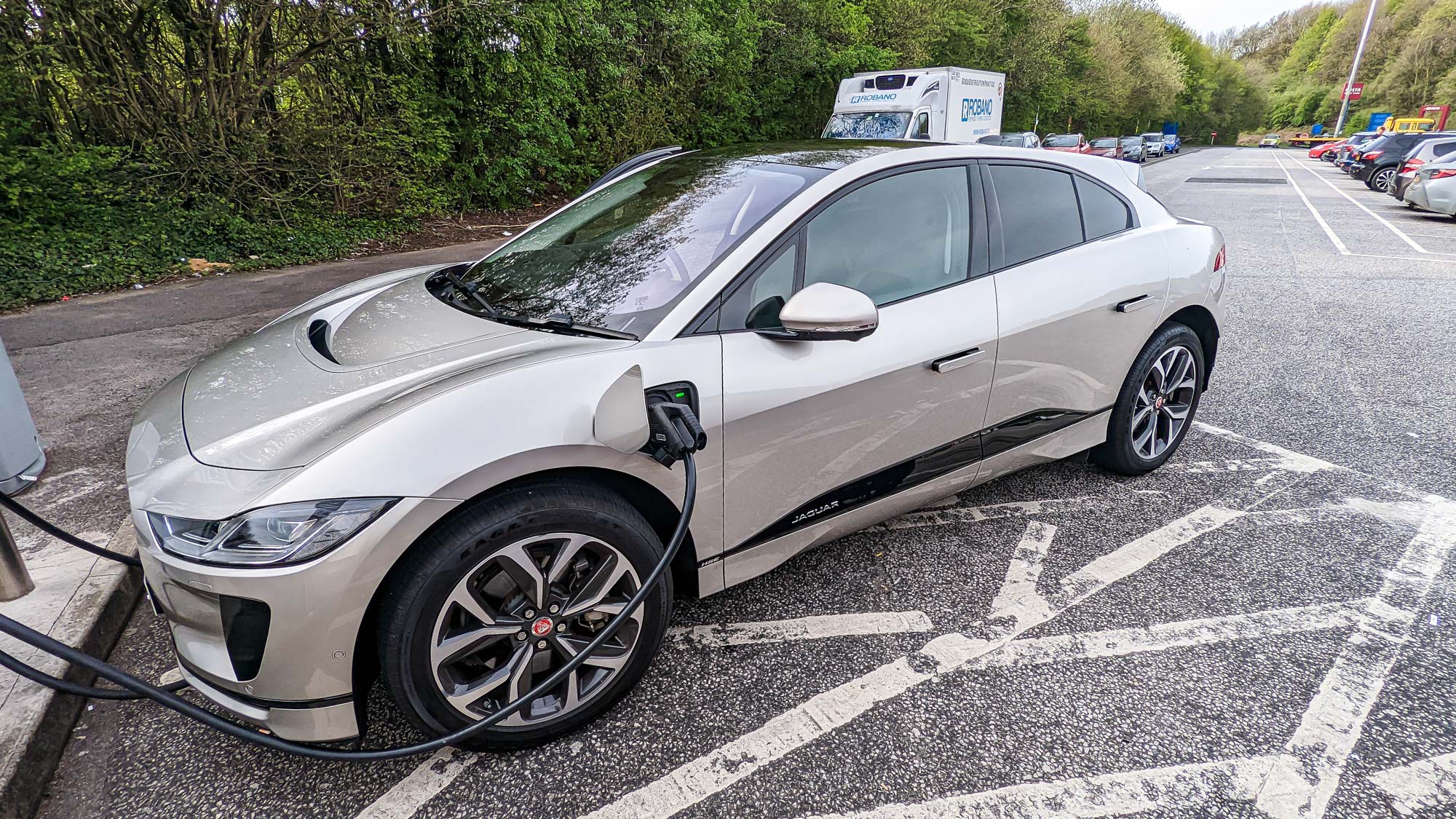
The I-Pace is also one of the growing number of cars to offer one-pedal driving, powered by the regenerative brakes. While you don’t get the option to toggle the mode on and off, which you can do with the e-Pedal switch on the Nissan Leaf or upcoming Nissan Ariya, it is still a very useful feature to have. Your brake pads would no doubt agree.
Jaguar I-Pace review: Verdict
Beyond the Jaguar name, there isn’t really anything that makes the Jaguar I-Pace unique. The 232-miles of EPA range is very middle ground, and it feels like quite an expensive car for what you get. Certainly in terms of charging speed and the finicky driver assistance features. It’s not an industry-leading car by any stretch, and it lacks any sort of killer feature, though that isn’t necessarily a bad thing.
The I-Pace is still very much a perfectly functional electric car, and that might be exactly what you’re looking for. The range estimate was on the money pretty much the entire time, and there’s a great mix of interior luxury, hi-tech features, and cargo space that make it perfect for lugging stuff around and enjoying long road trips in comfort.
You just need the money to pay for it all.

Tom is the Tom's Guide's UK Phones Editor, tackling the latest smartphone news and vocally expressing his opinions about upcoming features or changes. It's long way from his days as editor of Gizmodo UK, when pretty much everything was on the table. He’s usually found trying to squeeze another giant Lego set onto the shelf, draining very large cups of coffee, or complaining about how terrible his Smart TV is.

